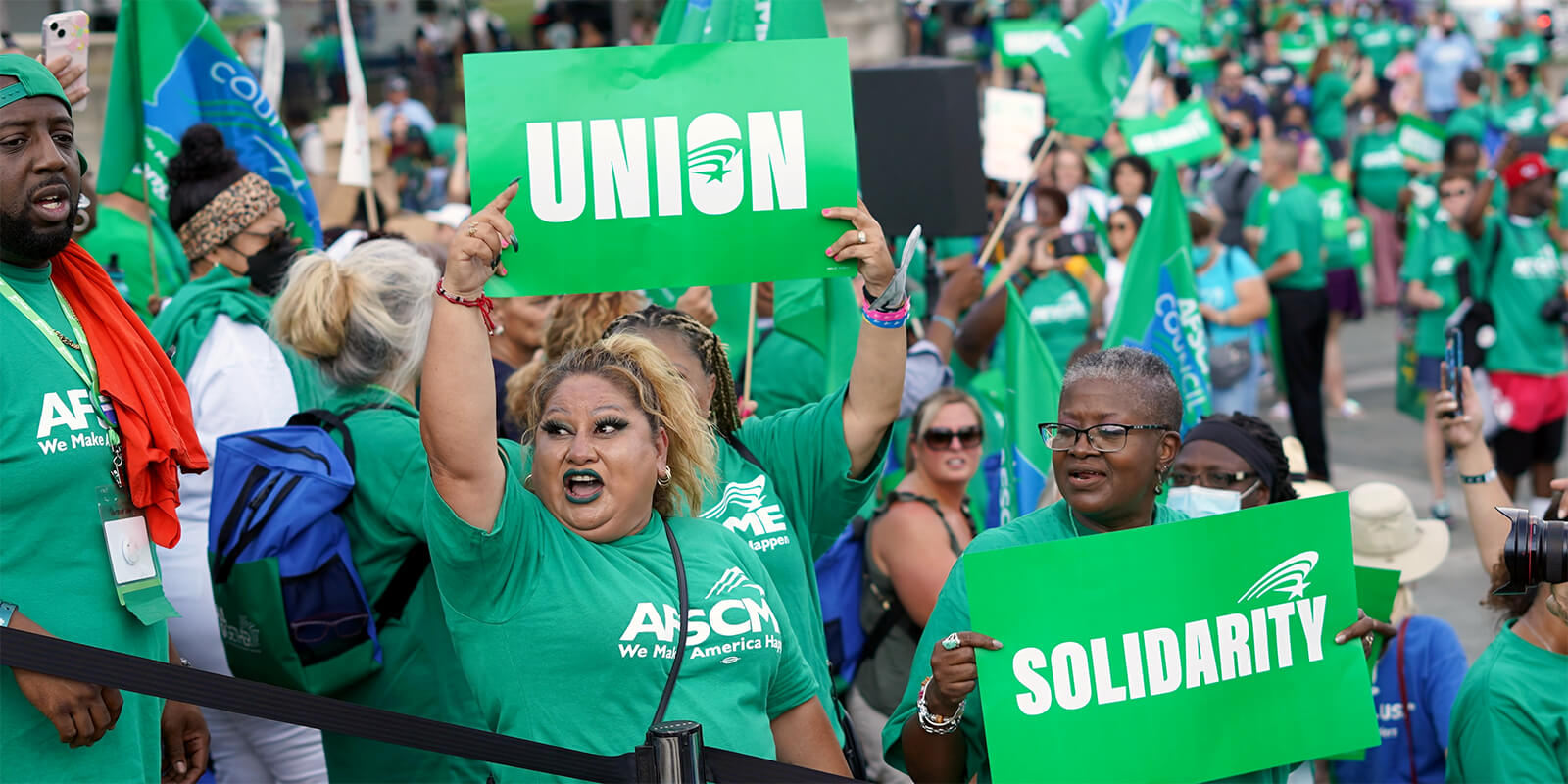What’s behind Americans’ 71% percent approval rating of labor unions – the highest since 1965 – revealed last week by Gallup?
The Economic Policy Institute unpacked the question after Gallup released its annual survey on union favorability.
“U.S. workers see unions as critical to fixing our nation’s broken workplace – where most workers have little power or agency at work,” EPI concludes.
The pandemic spotlighted the ways essential workers kept their communities running during the worst public health crisis in a century despite inadequate pay or crucial tools they need to perform their jobs. However, these struggles pre-dated the pandemic.
“Workers today are rejecting these dynamics and awakening to the benefits of unions,” EPI says.
But what are those benefits? According to EPI, there are many.
First, pay and benefits.
EPI notes that “unionized workers … earn on average 10.2% more in wages than nonunionized peers” and “union workers are more likely to be covered by employer-provided health insurance. More than 9 in 10 workers covered by a union contract (95%) have access to employer-sponsored health benefits, compared with just 69% of nonunion workers.”
According to EPI, unions even benefit nonunion workers by raising standards across the board.
But unions benefit society in even broader ways.
“Black and Hispanic workers get a larger boost from unionization,” states EPI, with unionized black workers earning 13.1% more than their nonunionized peers and Hispanic workers earning 18.8% more.
Women also benefit from unions, earning 4.7% more than non-union women workers.
EPI also found a correlation between states with a weak union presence and states where voting laws were being threatened.
“Over 70% of low-union-density states passed at least one voter suppression law between 2011 and 2019.”
Conversely, states with higher union density passed fewer restrictive voting laws, according to EPI.
From soccer players to Starbucks workers, from cultural workers to Amazon warehouse workers, Americans are discovering the union difference.
If you haven’t experienced the union difference yourself, it’s time you do.
